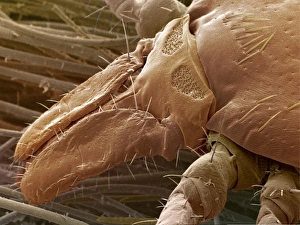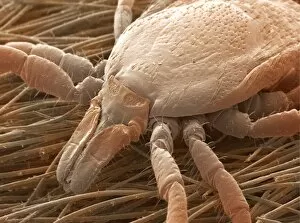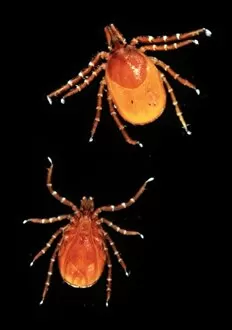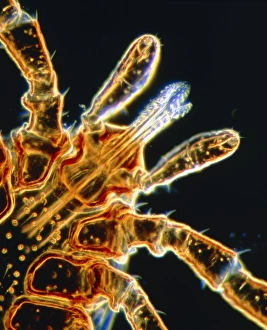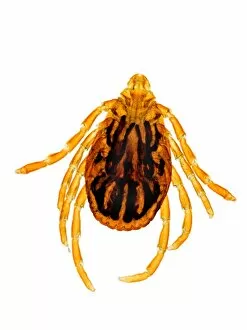Ixodes Ricinus Collection
Ixodes ricinus, commonly known as the sheep tick or castor bean tick, is a species of tick found in Germany and throughout Europe
All Professionally Made to Order for Quick Shipping
Ixodes ricinus, commonly known as the sheep tick or castor bean tick, is a species of tick found in Germany and throughout Europe. This tiny arachnid can be seen up close through scanning electron microscopy (SEM), revealing its intricate features. The SEM images showcase the distinct characteristics of Ixodes ricinus. Its body structure resembles that of a deer tick, with sharp mouthparts used for feeding on hosts such as sheep. These ticks are particularly prevalent in rural areas where livestock graze. The common sheep tick, also referred to as Ixodes ricinus, has adapted well to its environment. It attaches itself firmly onto the skin of animals like sheep and feeds on their blood for sustenance. The SEM images provide an insight into this parasitic relationship between ticks and their hosts. Ixodes ricinus plays a significant role in transmitting diseases such as Lyme disease. The LM image reveals the head structure responsible for infecting humans and animals with this debilitating illness. Understanding these microscopic details aids researchers in developing effective prevention methods against Lyme disease. Despite being small creatures, Ixodes ricinus holds great importance within ecosystems due to their role as vectors for various pathogens. Their presence serves as a reminder of the delicate balance between nature's intricacies and human health concerns. These captivating SEM images shed light on the fascinating world - from its identification as both a sheep tick and castor bean tick to its involvement in spreading diseases like Lyme disease. Exploring these minute organisms allows us to appreciate nature's complexity while emphasizing the need for vigilance when it comes to protecting ourselves from potential health risks associated with ticks like Ixodes ricinus.



